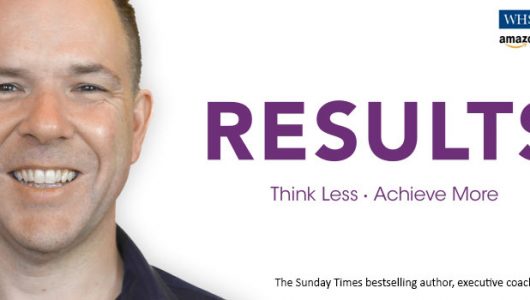Storytelling is an art.
Not a process, method, or technique. Learning the art of storytelling is not a task that can be completed quickly, even if you take a course or two to get started. It’s a trial-and-error process of mastery. Just as with art, performing requires imagination, insight, talent, and practice.
Sounds like a lot of work, right? Essentially, it can be said that storytelling is an integral element of the most successful marketing plans, and this is certainly appropriate. Vibrant brands stand out from ordinary businesses, and customers who are loyal to the brand are different from those who only come in once.
It’s also the heart of inbound marketing.
Storytelling is a hugely valuable asset in your internet marketing strategies. Hence, we’ve created this guide to assist you in finding out about and comprehending storytelling so that you can craft beautiful, stimulating stories for your spectators.
What Makes a Good Story?
The connotations of words such as “good” and “bad” depend on an individual’s point of view. However, certain essential elements make for an excellent story for the narrator and the one listening.
Good stories are:
- Entertaining: Good stories keep the reader interested in what’s coming next.
- Believable: Good stories convince the reader of their version of reality and make it easy to trust and engage.
- Educational: Good stories spark curiosity and add to the reader’s knowledge bank.
- Relatable: Stories remind readers of the people and places they know. They help their audience recognize patterns in the world around them.
- Organized: Good stories follow a succinct organization that helps convey the core message and helps readers absorb it.
- Memorable: Whether through inspiration, scandal, or humor, good stories stick in the reader’s mind.
How to Tell Great Stories
The free Power of Storytelling course from HubSpot Academy states that all successful stories contain three distinct components.
1. Characters
At least one protagonist is featured in every narrative, and this person will be vital in connecting your viewers to the tale. This main character is often called the protagonist.
The characters you create serve as a connection between yourself as the narrator and the viewers. If your audience can understand what it’s like to be the character you’ve made, they will more likely take your requested action.
2. Conflict
The character learns through the difficulty of the struggle how to triumph over the challenge. Having an issue or issue in your narrative stirs feelings and bonds the audience by providing shared, relatable examples. The potency of storytelling lies in the message and lesson you are imparting. If there is not a struggle in your narrative, it is almost certainly not a tale.
3. Resolution
Every tale has an ending, yet it does not have to end happily. The end of your narrative should bring the story to an end, allowing readers to understand the characters, their struggles, and their motivations. At the same time, it should give your readers something to think about or a message to ponder after the story is done.
If you’re just starting out with storytelling, there are some other components that you should consider as you put together your primary story.
4. Structure
Your plot is the structure of your storytelling.
A blog can have excellent writing and relatable characters. However, if you do not construct a smooth progression of occurrences, your blog post will perplex your audience.
Your website’s “About” page can provide an account of the history of your business. However, if you don’t divide the content into manageable and helpful sections, your website visitors may depart before reaching the most critical parts.
Plots don’t need to be in chronological order. You can try different approaches to designing the property of your story.
Your narrative should have commencement, development, and resolution. The familiarity of this framework creates a sense of ease and receptiveness to fresh ideas in your listeners.
5. Setting
How your story is told affects how your listeners perceive it. The location of a narrative is more than just its backdrop. It’s how you can:
- Share the values and goals of your characters.
- Shift the tone of conversations and actions.
- Make it easier to show instead of tell.
For instance, imagine you are fabricating a publicity drive that highlights two primary personages. One has a business just starting out, and the other works for a big corporation. What location would be an appropriate spot for these two to come together? How could their location impact the conversation?
Now that you know what should be included in your story, let’s discuss creating it.
The Storytelling Process
We’ve confirmed storytelling is an art. Like art, storytelling requires creativity, vision, and skill. It also requires practice. Enter: The storytelling process.
All artists working in various mediums, such as painting, sculpting, dancing, and design, use individualized methods while making their art. This assists them in determining a beginning point, creating their ideal outcome, and honing their skills as time passes. The same can be said for businesses writing stories specifically for storytelling.
Given the number of facts, figures, and messages an organization or brand has, it is essential to convey them all in one succinct tale. Why is this process necessary? How do you know where to begin? Well, start with the first step. Once that has been accomplished, you will understand where to travel and how to arrive there.
1. Know your audience.
To craft an enthralling narrative, you must be aware of your audience and those who will react and take action. Who will benefit and respond the strongest? Who wants to hear your story?
Before you begin writing, take the time to gain insight into your target audience and identify who your buyer persona(s) is/are. This process will introduce you to the audience likely to consume your narrative. Figuring out the target audience for your story will provide essential guidance as you create its basic elements.
2. Define your core message.
No matter how long or short your narrative is – a single page or twenty pages, a runtime of ten minutes or sixty – it must contain a fundamental theme. Staying the groundwork by establishing your main point before continuing is essential.
What is the point of your story? Is your account selling a product or raising funds? Explaining a service or advocating for an issue? Summarize the story in 6-10 words. You don’t possess a critical concept if you can’t accomplish that.
3. Decide what kind of story you’re telling.
Not all stories are created equal. Determine the emotion or response you desire your readers to have when reading your account to figure out what tale you’re telling.
4. Establish your call to action.
Your goal and the order you’d like your audience to follow after reading should be similar, but the command you give them to take the desired action should be defined.
What action do you hope your readers take after they have finished reading? Would you like them to give money, sign up for an email list, participate in a lesson, or purchase something? Draw up an outline corresponding to your goal to ensure they are consistent.
5. Choose your story medium.
Stories can take many shapes and forms. Sometimes people read novels. At times they observe or listen. The type of tale you have and what you have available, like time and capital, decide the choice of the storytelling vehicle.
How to Create Content that Deeply Engages Your Audience
The investigations you have carried out up to this point have been the main burden of the process. These four elements of a compelling story concept are essential to further refine your content marketing plan.
1. Be unpredictable.
The first thing you absolutely must have is attention. Without initial attention, nothing else you’ve done matters.
Nothing will disrupt someone’s attention quicker if they assume they can predict what you will say. In addition to making it attractive, a great premise provides an element of surprise that makes it irresistible.
Understanding your target demographic and what things they are familiar with in their day-to-day lives is essential.
What messages are they getting from your competition? This is the standard you must use to develop an inventive footing for your concept.
Nowadays, you could look more extensively for a novel with an extraordinary idea that astonishes or downright bewilders people. Incorporating a vivid imagination with well-developed research abilities allows you to discover the hidden gem others miss.
People tend to tune things out due to a shortage of interestingness, resulting in even a once desirable subject being boring.
Standing apart from the crowd is an excellent way to attract attention, so unpredictability is essential to a robust framework.
Generating a novel idea is essential for any individual composing material or selling goods. Just remember that things change. What was once unexpected may not only become foreseeable but boring.
2. Be simple.
It is essential to abide by the guideline of clarity and simplicity when participating in successful content marketing. It can be hard to distill an original and ambitious concept, known as a premise, to its core components or, worse, not even attempt to do so.
Don’t get me wrong. I’m not suggesting that you simplify your great idea to absurdity.
That defeats the purpose.
I’m suggesting that you create a message that is so easy to understand that it goes right into the head of the individual you’re trying to reach, leading them to tell themselves the story. Your writing should guide and motivate him in the right direction, not be overly aggressive.
Your idea will undoubtedly stir up some commotion in your market and will surely be something no one would anticipate. Reduce it to a paragraph.
Now, take it down to two sentences.
Get it even shorter.
Just do it.
Right now, you may have created a fantastic slogan. At least you possess the material to uphold the confident declaration in your main headline.
3. Be real.
It is said that in today’s world of social media, you need to remain genuine. Be authentic. Speak with a human voice.
Be you.
It is still essential to remember that the focus of social media should stay on the viewers, not yourself. In fact, it’s more about them than ever.
How do you make that work? What makes a premise real to the right people?
To start, make sure the idea you are presenting resonates strongly with the people you are speaking to and aligns with your fundamental principles. Without relevance, you can’t inspire meaning. And its meaningful messages that inspire action.
The significance of something can be determined by what people think before being encountered. As was previously mentioned, your target audience’s beliefs dictate how they perceive the world, and you must create content that accurately illustrates this point of view to succeed.
The context your desired audience perceives your message determines the significance they attribute to it based on their beliefs. The story of the customer’s journey is a heroic one, and your brand could be there to provide direction.
There’s another aspect of being “real” with your content. Your messages need to express valuable advantages that can be comprehended. This is the second leading factor of a sincere basis, and it is essential to help your potential customers understand and relate to your communication.
Tangible here means physical or existing instead of imaginary or fanciful. This is part of your plan that is explicitly shown, which is the part where you narrate the story so that certain information is clearly put into a person’s consideration.
Remember the Total cereal ad from the late 1980s?
“How much of YOUR cereal do you need to have the same amount as one bowl of Total?”
You then observed piles of breakfast cereal receptacles full of a range of rival companies, with one container stretching up to twelve bowls.
Powerful, right?
Rather than bland phrases such as “Total has 12 times the nutrition of the leading brand,” they presented a visual representation of the advantage. It doesn’t necessarily require visual elements to be effective.
Verbal expressions have the potential to powerfully create an image in one’s thoughts.
Create messages people can relate to establish instant understanding, as with all fantastic ideas. However, one more factor is necessary for a successful premise.
4. Be credible.
To successfully persuade your reader, it is necessary to make an emotional appeal before making any rational arguments. The brain’s emotional and often subconscious side is responsible for the thought of “I want that.” Logic will never be considered if your starting point is not emotionally compelling.
The sale (or other action) is within reach if you turn on your emotional side. And I mean that literally. Eventually, our rational thinking takes control (which we tend to think is due to logical reasoning initially). If your starting point is not believable (as if it is too good to be confirmed), you will not succeed.
It is not always ineffective to exaggerate, as long as the person you’re trying to convince wants to trust you very much. Those in a state of desperation are preyed upon in certain places.
Trust is essential in any market and with any promotional campaign, so establishing believability is the final element to making it a success – folk must have confidence in you similarly as the campaign has to work with their opinions.
You must demonstrate the worthiness of an imaginative concept or a remarkable proposal the more prominently it stands out. This leads us directly to a surprising, uncomplicated, and concrete demonstration of the advantage that’s believable.
Every box of Total cereal contains factual information concerning its nutritional value. Although current views on saturated fat have shifted, the FDA guidelines at the time of Art Silverman’s popcorn claim agreed.
The type of evidence a specific assumption needs will differ, yet it’s ideal if the assertion can be given as much credibility as possible.









